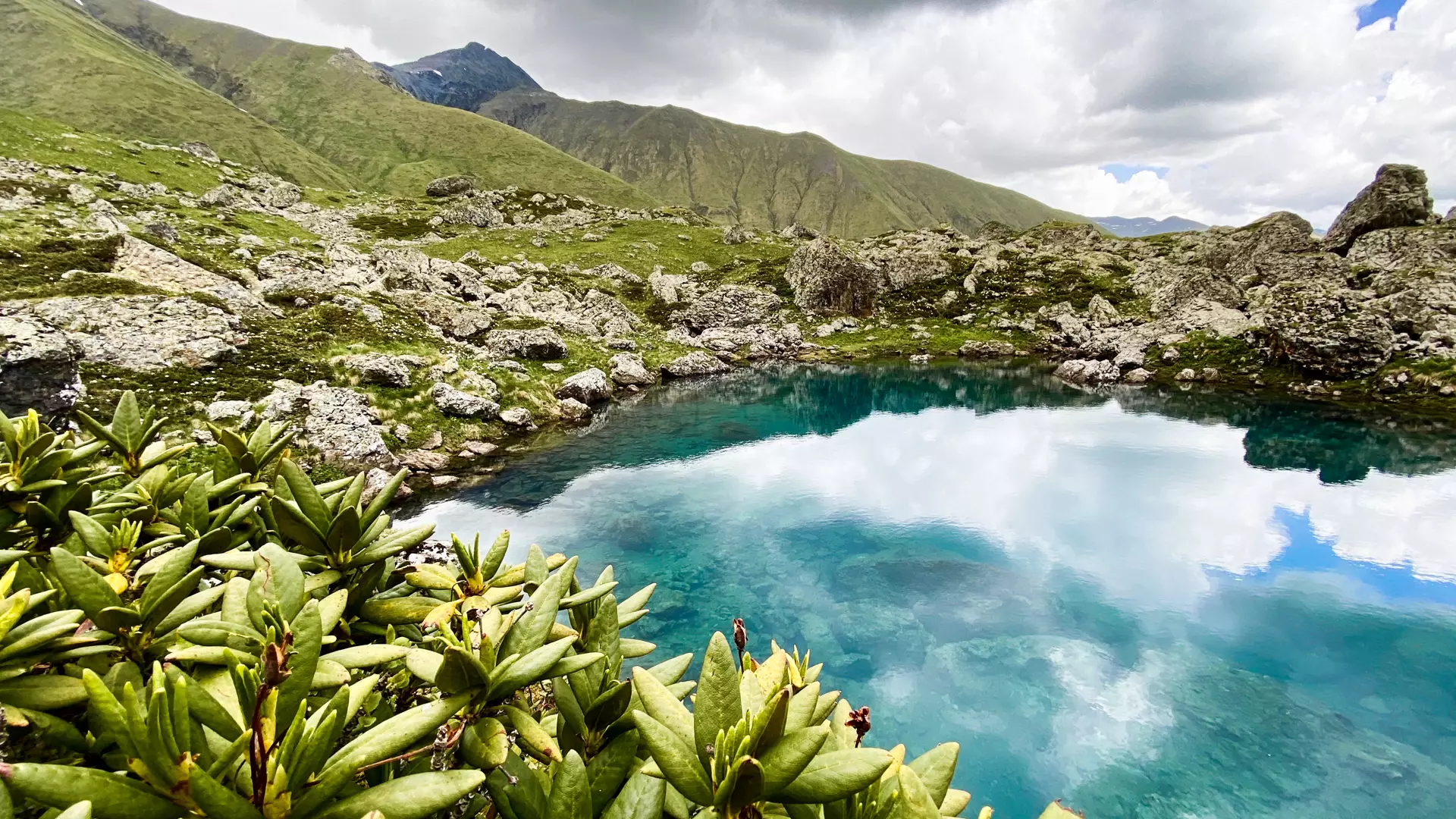Abudelauri Lakes
The Secret of the Colourful Lakes of Abudelauri
At first glance, the magnificent colours of the Abudelauri Lakes in Khevsureti region might seem magical, but there are actually multiple factors contributing to their unique colouring: the white lake contains carbonates which dissolve when the water heats up and gives the water its white colouring; while it is a glacier that gives the blue and green lakes their colouring, where layers of sediment reflect the rays of the sun in blue and green.
But isn’t it more fun to imagine that they might also be magical?
How to Get to the Colorful Lakes of Abudelauri
The green and blue lakes are close together, but the white lake is a little farther away, higher than 2,800 meters, right at the base of Chiukhi Glacier, so getting there can be difficult.
The best road to the blue and green lakes goes from Roshka Village, where the paved road ends, and a seven-kilometre trail begins, which can be covered by hiking or on a horseback. To reach the white lake, you will need to hike an additional 1,5 km on the rocks and boulders, brought down by the glacier over thousands of years.
Be prepared for the region’s unpredictable weather when planning this hike, as you might start in the sun and finish in the pouring rain. So come prepared to seek shelter if the weather turns against you.
Where to Stay the Night
There are several family-run guesthouses in Roshka Village, where you will be treated according to the rules of local hospitality. Alternatively, the village is also perfect for camping.
The Best Time to Visit the Abudelauri Lakes
The best time to visit the Abudelauri Lakes are the summer months, particularly June and July. In the winter and spring, the lakes are often covered with snow, while water levels tend to be low in August.
Another Way to Get to the Abudelauri Lakes
If you’re feeling particularly adventurous and ambitious, there is another route to the Abudelauri Lakes - a cross-region hike from the village of Juta, Kazbegi Municipality. The route usually takes two days and is recommended only for experienced hikers, but the brilliantly coloured lakes make for a wonderful finish to an arduous hike.
Cookie Policy

